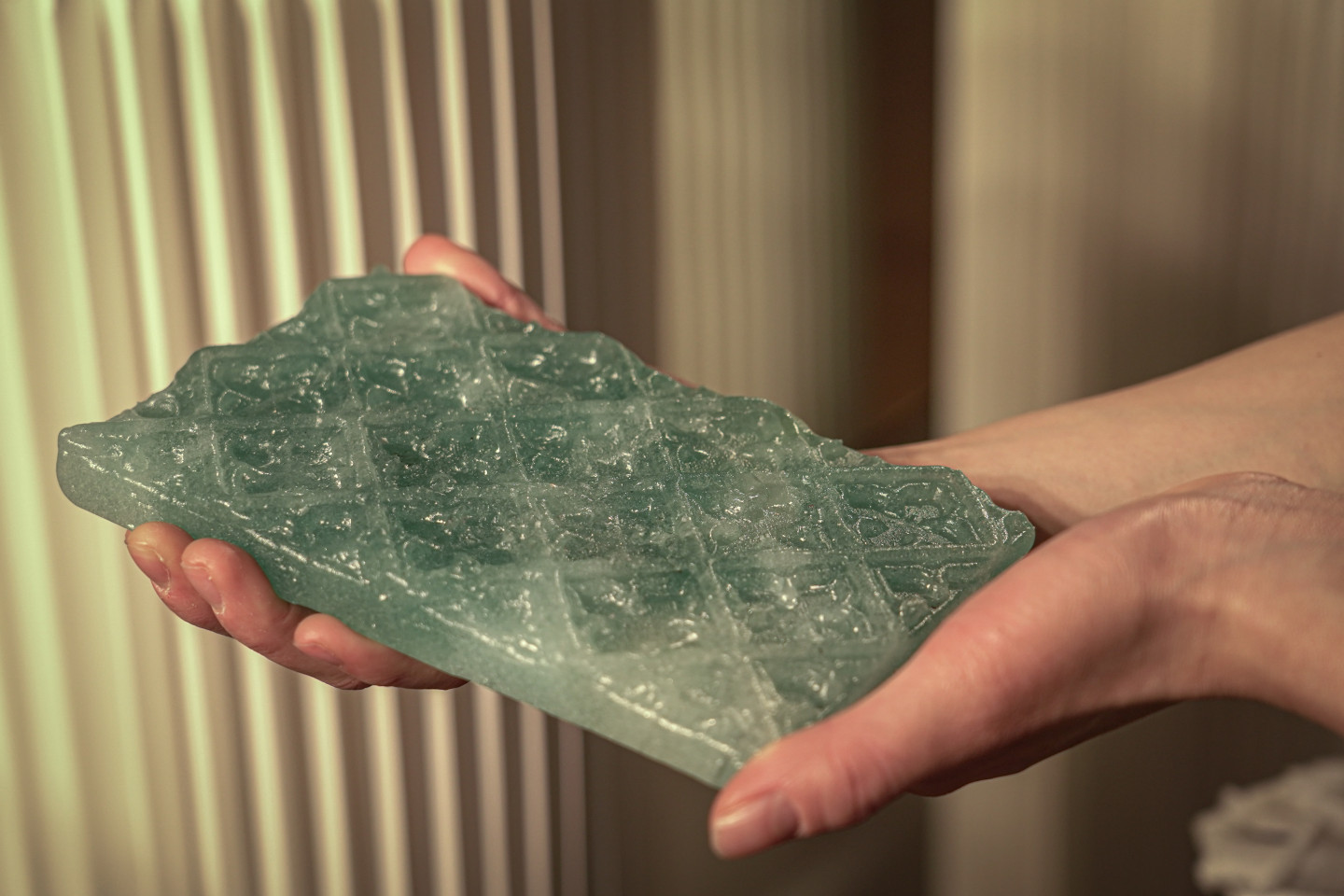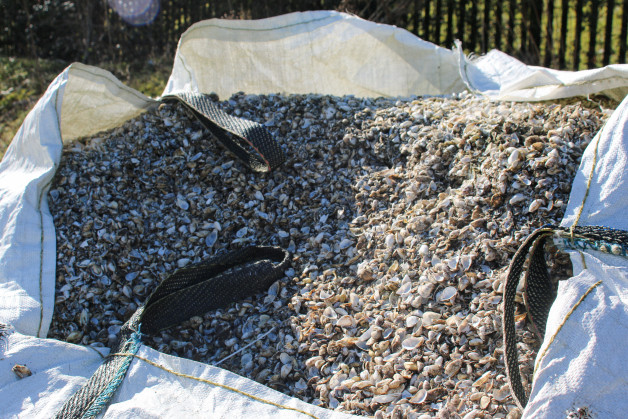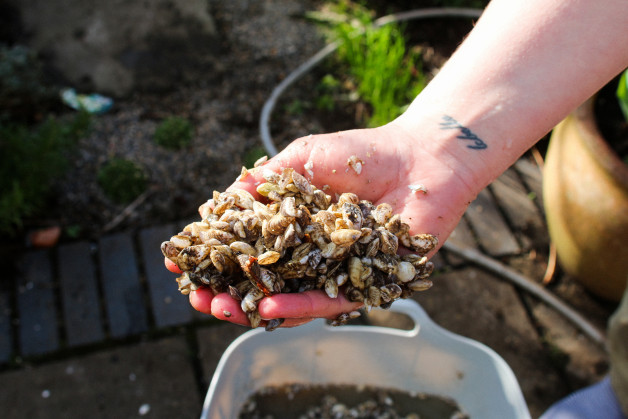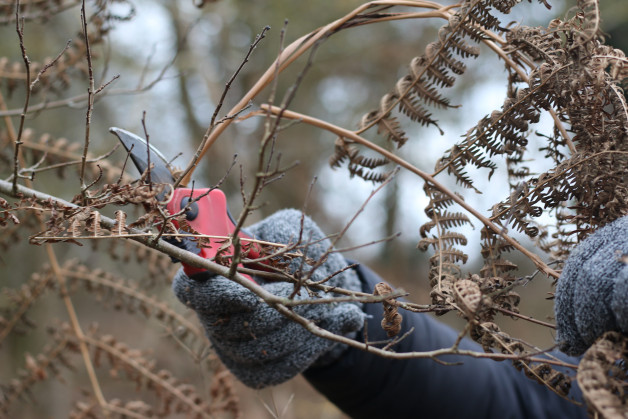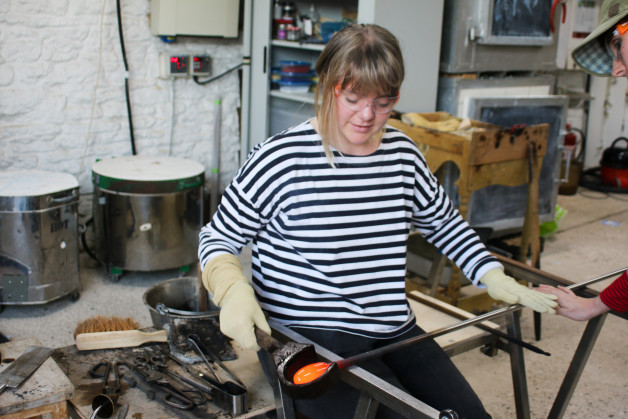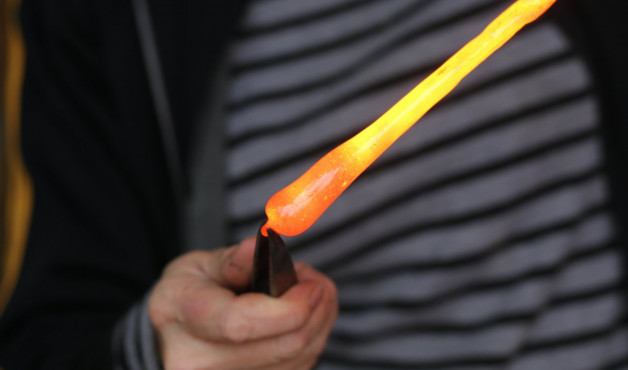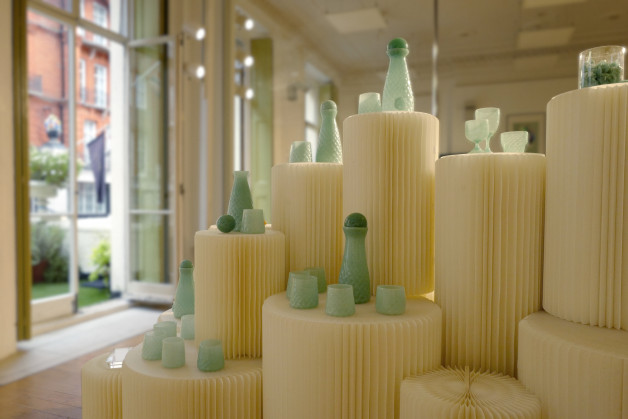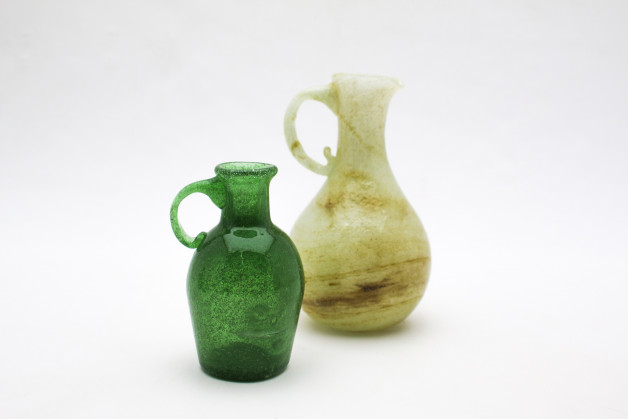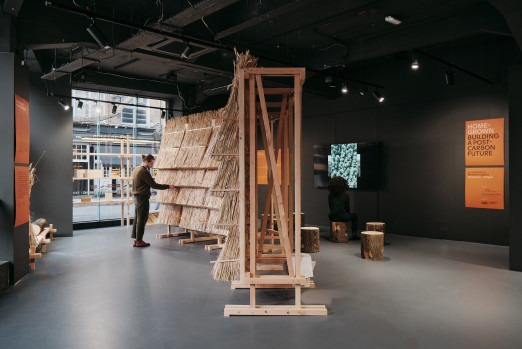Lulu Harrison is the founder of Thames Glass, a project aiming to create more sustainable alternatives to conventional glass by repurposing waste from the river Thames. She has been creating unique recipes, replacing the highly processed materials that are often used in glassmaking. Throughout this process, she has been working alongside glass masters in the UK & Murano, Italy, as well as professors in glass archaeology and Thames Water. By combining crafts, design and science, Thames Glass actively seeks to redefine material traditions through working with waste materials and local communities.
Maria Dragoi: Could you speak a bit about your practice and what drove you to wanting to develop sustainable materials?
Lulu Harrison: It really came about as part of my MA, which I was doing for two years at Central St Martins - Material Futures. I was interested in working with different waste materials, specifically looking at materials based around the River Thames. I had a lot of connections to that area and I was part of lots of different ‘river organisations’ – so it stemmed from there. I’ve always had a big interest in glassmaking as well, so I was just researching materials, looking at the waste circulating the Thames, and then I came across ‘quagga’ mussel shells, which are invasive and tend to get trapped in the water pipes.
It made sense to get in contact with Thames Water, I found out by word of mouth that they were having this problem. They had this mass of material to get rid of, and it’s currently just going into landfill. I wanted to start figuring out whether it could be used in glassmaking. I had a basic understanding of the chemistry of glass and and I saw that they could act as the limestone element necessary. I also spoke to other glass blowers and glass scientists and got the mussel shells chemically analysed to see what properties they had.
I thought about what else I’d need to add to them to create glass – because you need three components: silica, a flux (which lowers the overall melting point), and the limestone (acts as a stabiliser and stops the glass dissolving). I tried to find all of these components around the river the mussel shells had come from and began working with different local sands and wood ashes. I was working with a species called Bracken that’s quite a famously invasive fern for a while.
It's important to understand the community involved in the making process, and leaving university I’m trying to figure out how to continue working. I’m looking at more geo-specific glassmaking, using different materials from different locations, looking at local production and working with local communities to create glass. It’s a bit of a daunting moment, being thrown into the world of commercial materials and having to find a way to make money.
M: Looking at the field of contemporary glass blowing, how do you see your work fitting?
L: The majority of glass blowing practices use materials that are transported and extracted on a large scale, often seeking the highest quality silica, to get very pure, clear glass. This is also the silica that we’re running out of. I’m looking at using more abundant sands that are not quite as pure, and that’s shown through the texture, colour, and bubbling of the glass I make. I don’t create the very clear glass we’re used to seeing, it’s got a bit more impurities, and I’d say a bit more character. I’m really looking at more unusual shapes and designs.
M: I guess it’s about disrupting the industry standard. I wanted to ask you what you think some common misconceptions are about working with sustainable materials?
L: I think even saying that any material is fully ‘sustainable’ is a challenge. That’s something you have to think about as a designer, what can you do about that? I was interested in the material side of things, but also looking at the energy use, because it’s an incredibly energy intensive practice. The industry, with increased gas prices and uncertainty is definitely threatened. I’ve been looking at ways around this by working with recipes that have a higher flux content, and therefore require a lower melting temperature. I’m also looking at ancient ways of producing glass that don’t necessarily rely on gas.
There are so many things that come with the term ‘sustainability’, and you have to look into your own practice and ways of challenging that. One of the most difficult things for designers becomes accessibility. I think with a lot of sustainable products comes quite a high price point. When you’re doing something that isn’t mass produced, it ends up being a more expensive process.
M: I guess it’s quite difficult to achieve scalability without a shift in how the industry itself works, it’s the same as food. We have all this amazing tech that seems to be difficult, or impractical, to apply to general situations. It doesn’t make the technology less valid, but its not suited to integrate into our current systems.
L: Yeah, and these realisations are things you often don’t discover until you go along the process and realise upscaling is really hard. If you haven’t got initial funding, or some sort of financial backing, figuring out how to take your idea to the next level can be challenging. You have to think about who you want to work with, how you go about getting funding, all that – I’ve been doing this sort of application now and I swear it’s a full time job, just staring at a screen. That’s the part that’s challenging for me, accessibility.
M: What do you hope to see for the future of mainstream material culture?
L: I think there’s really exciting things that are coming out on smaller scales, especially off my course. It was really nice because everyone on the MA came from very different backgrounds and then ended up doing something completely different from what they were originally doing. I’m really interested in localism – creating products from local materials and working with local communities.
M: Do you think there’s anything people who are not makers themselves, but ordinary consumers, can do to take steps towards engaging with material in a more sustainable way?
L: It’s all about looking at what you’re buying day-to-day. Where’s it coming from? How far does it have to travel? Keeping it personal is a good way to start I think. It can start from your groceries, and then expand into everyday objects.
M: I saw on your website that you’re working with Bureau de Change – what’s that project about?
L: We made a set of tiles for the final degree show, we were envisioning tiling the river facing backs of pubs along the Thames with them. We were inspired by different kinds of nineteenth century chimney designs, and we were looking at how this material could be incorporated into future building. So they were the first prototypes. Now moving forward we’re looking at how to get them tested for durability, safety, and all kinds of weather conditions to see if they can act as a replacement for the more typical glass tiles we see.
Bureau de Change and Lulu Harrison create Thames Glass tiles (dezeen.com)
M: That’s something that we need to consider with these alternative materials – how do they interact with the stuff that’s already there? There’s the industry standard, and they need to be subject to the same testing as conventional materials, even though the functions they fulfil might be different, they’ll still have to exist alongside one another.
L: Yeah, I’m going through that process at the moment, looking at getting things tested – it’s really interesting to see what kind of qualities it has compared to something that has that long-standing material quality. I’m trying to work out whether the glass can be used for architectural purposes or whether it’s more suited to interior application. Then it’s figuring out how to make it more robust if it needs to be and working to create adaptable variations for different uses. It’s something that’s constantly evolving, I think there’s so much opportunity to continue with testing and experimentation.
The next step is figuring out which way to go – it comes down to working with engineers and other people who can test the glass and tell you what it needs. I want to go down the more material testing route as well as building up a business and creating more products.
M: I guess that’s also tied to your practice being site-specific – there’s going to be different requirements for everywhere you make the glass, due to the difference in material’s you will have to use as well as the social/environmental context.
The way the building industry is set up right now is about widening applications across all environments, which can have an incredibly flattening effect because it can tend towards being ignorant of context. I think the process of site specific experimentation you’re doing is so exciting, but it’s also time consuming and expensive.
L: It is super exciting, I’ve had some really exciting commissions come in – but you always think – okay there’s some things I need to figure out before this can happen, and it’s always to do with the testing side of things, the material engineering, development, working with specialists in the field. I’m trying to take the knowledge base I have so far and apply it to different locations, but of course every material is so different.
M: Have you got a specific location you’re keen to explore next?
L: I’d really like to make Cornish glass. I was working with fishermen there, working with their waste. The had lots of different kind of fish bones and shells, so the material I need is already there and embedded in the community. I’d also like to look at working with different seaweeds.
M: How did you come into the glass world?
L: I think I always had an interest in glass as a material, and it seemed to be the perfect vessel for the ideas I was having when I started my MA. Those two years of research, and experimentation, and collaboration were the most useful and insightful. I was able to work with different people from within the glass communities and gain knowledge for them. There was group in Newcastle I was working with called PEGG : Post Disciplinary and Experimental Glass Group. There we studied history and archaeology, and they have also done a lot of work with ancient glass processes. A lot of that involved working with raw materials, because these ancient communities just had what they had, and that’s really shaped my work in terms of working with local materials. Having them as contacts and people that were up for helping and giving advice was invaluable. I was able to immerse myself in that world for two years, it was so nice that there was such a strong tie between understanding heritage and understanding raw material and geography.
M: I think a lot of people can become engaged by taking a historical approach. It’s funny that the way to look for a sustainable future is sometimes to go backwards.
You can see more of Lulu's work on her website:
https://www.lulu-harrison.com
